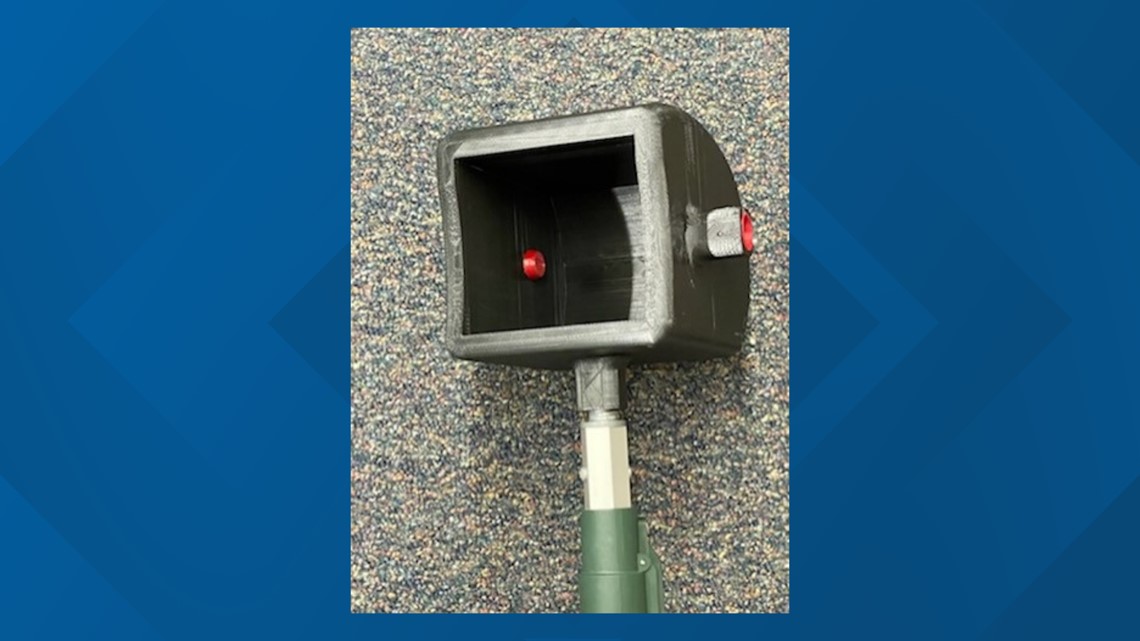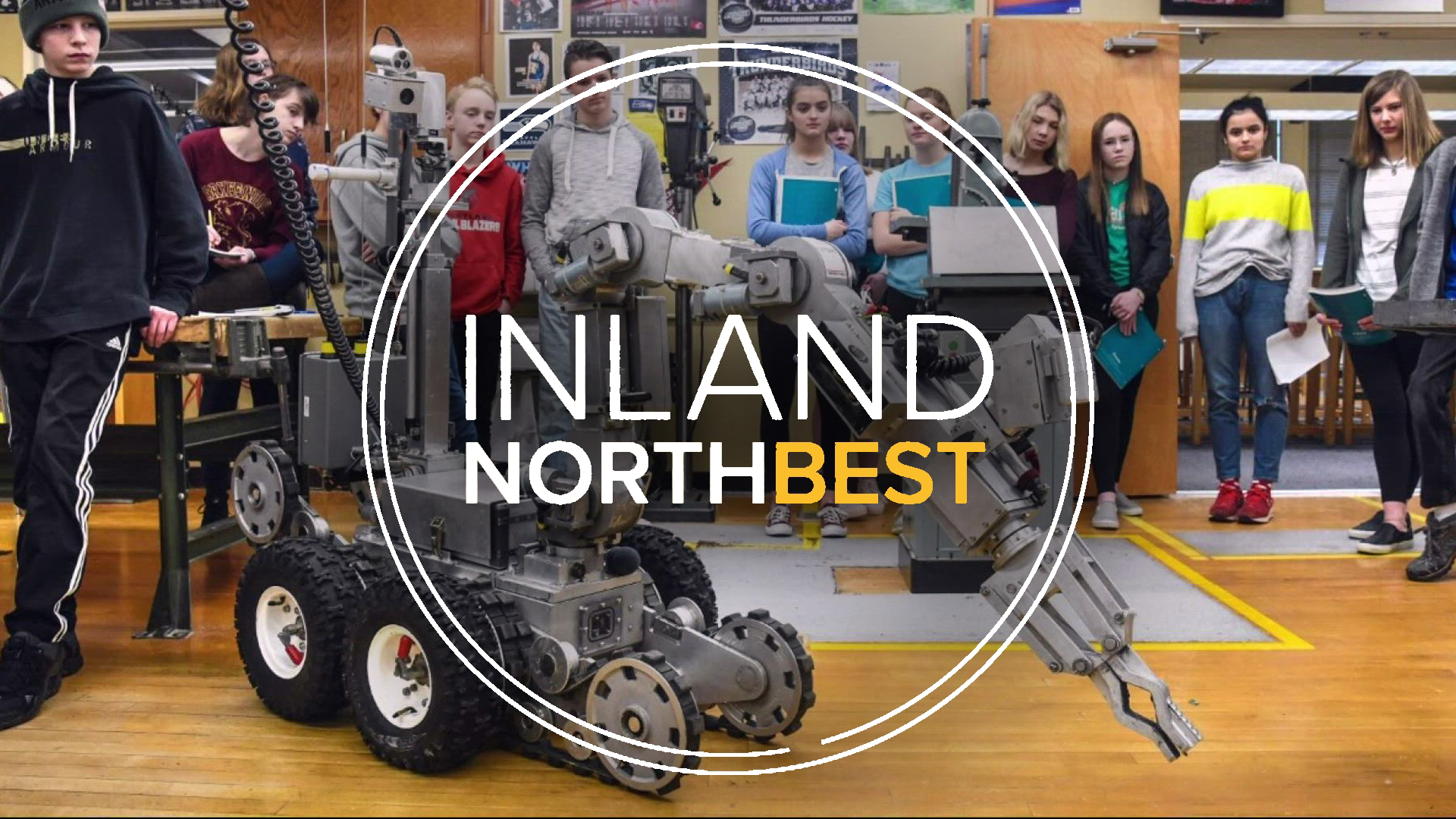SPOKANE, Wash. — In Kim Taylor's Advanced Engineering class at Sacajawea Middle School, ideas come to life.
Instead of textbooks and presentations, students use computer-aided design (CAD) programs and 3D printers to turn sketches into reality.
Their creations are far more than just concepts. The middle schoolers are designing and making tools that Spokane Police Officers use on the streets.
"It's fantastic," Taylor said. "They get to meet and know all the different officers. They get to work with them and they get to see something that they actually made as an 8th grader come to fruition, actually work. I don't even know what to tell you. They can tell you."
Many of Taylor's students share the same sentiment.
"This class is just really interesting compared to the rest of the classes," eighth-grader Dimitrios Tsakarestos said.
"It's, like, much more hands-on," fellow student Maddie Kalisvaart said. "It's my favorite class."


Taylor's students have designed and printed grasping mechanisms for the bomb squad's robot so it can do things like open doors and pick up keys. Just recently, her class came up with a solution for the SWAT team.
Cpl. Anthony Guzzo now keeps that creation in the back of his cruiser. It's a 3D printed box, specifically designed to hold the SWAT team's drones.
The box, with the drone inside, is then mounted on an extendable pole. It allows officers to use the drone's powerful cameras in situations where it's not feasible to fly the drone.
Cpl. Guzzo said he tried to create the box on his own, but then turned to Taylor's class for help, and they took it from there.
"It was insane," Guzzo said. "(They) knew exactly what I wanted. They were taking measurements and there must have been in that first five minutes like six or seven different ideas that went out as to how they were going to make this happen."
KREM 2 was there as police put the students’ creation to use back in March.
A robbery suspect was holed-up inside an RV in north Spokane.
Cpl. Guzzo used the middle schooler’s creation to see inside the camper, where the thermal imaging camera showed them exactly where the suspect was hiding.
"It was incredible to see them get to be faced with a real-world problem and then all the way through from design to printing, to actually being able to watch that clip from RV," Guzzo said.
Eighth-grader Josh Sauders did the bulk of the work on the creation. One prototype, a lot of measurements and 70-plus hours of 3D printing later, it was ready for use.
"It was definitely exciting," Sauders said. "It kind of made me go, 'Oh wow, my thing is actually being used out in the field, in the real world to help.'"
Taylor urges her students to keep dreaming and creating. She wants to show them what they learn here translates to life outside the classroom. As an educator, she says that is invaluable.
"Incredible, like the best," Taylor said. "Because I feel like it is the absolute way to teach. I know for the rest of their lives, they'll be able to remember what they were able to accomplish and who they were able to help."
The class has also designed and created a device for the FBI to help them deal with suspicious packages. Right now, they're working on robotic wheelchairs for local children with disabilities.

